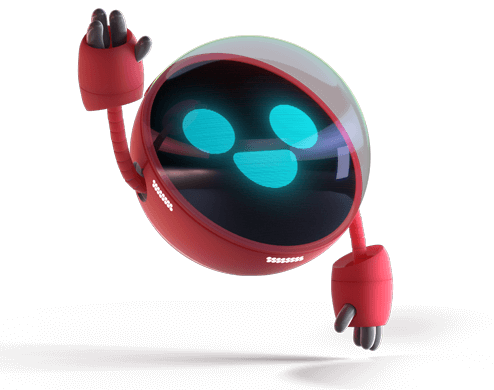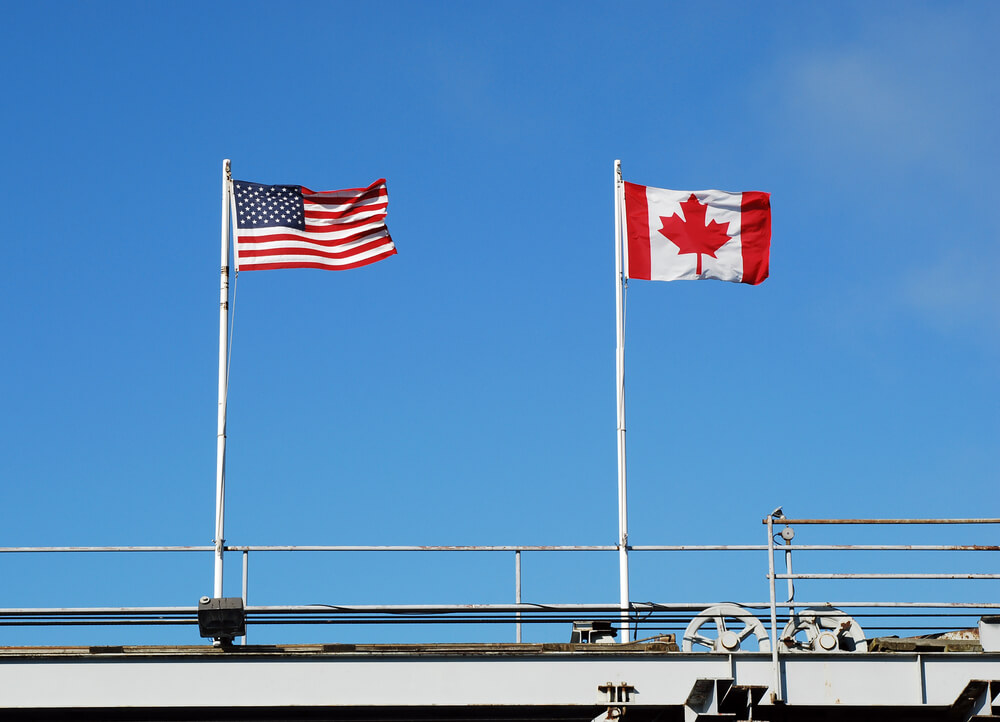Canadian Mortgage Rate Forecast 2025
Learn about 2025 interest rate trends that impact your mortgage rates.
Today's Headline
How much does your credit score affect your mortgage rate?
A higher score tells your bank that your risk as a borrower is low, which usually prompts them to offer a better rate for your mortgage.
Read moreJul.02.2025
The Best Current Mortgage Rates in Canada
Evaluate Canadas best mortgage rates in one place. RATESDOTCAs Rate Matrix lets you compare pricing for all key mortgage types and terms.
Rates are based on an average mortgage of $500,000 and subject to change based on filter criteria.
Updated 20:46 on Jul 09, 2025| Placeholder |
Insured
The rates in this column apply to borrowers who have purchased mortgage default insurance.
This is required when you purchase a home with less than a 20% down payment.
The home must be owner-occupied and the amortization must be 25 years or less.
|
80% LTV
The rates in this column apply to mortgage amounts between 65.01% and 80% of the property value. The home must be owner-occupied and have an amortization of 25 years or less. You must have purchased it for less than $1 million. These rates are not available on refinances. Refinances require "Uninsured" rates.
|
65% LTV
The rates in this column apply to mortgage amounts that are 65% of the property value or less. The home must be owner-occupied and have an amortization of 25 years or less. You must have purchased it for less than $1 million. These rates are not available on refinances. Refinances require "Uninsured" rates.
|
Uninsured
The rates in this column apply to purchases over $1 million, refinances and amortizations over 25 years. More info on the differences between insured and uninsured rates.
|
Bank Rate
Bank Rate is the mortgage interest rate posted by the big banks in Canada.
|
|---|---|---|---|---|---|
| 1-year fixed rate | 4.69% | 4.19% | 4.19% | 5.59% |
5.49%
|
| 2-years fixed rate | 4.04% | 3.89% | 3.89% | 4.54% |
4.79%
|
| 3-years fixed rate | 3.87% | 3.99% | 3.99% | 4.24% |
4.29%
|
| 4-years fixed rate | 3.99% | 3.99% | 3.99% | 4.44% |
4.39%
|
| 5-years fixed rate | 3.91% | 3.89% | 3.89% | 3.91% |
4.09%
|
| 7-years fixed rate | 4.39% | 4.24% | 4.24% | 5.19% |
5.00%
|
| 10-years fixed rate | 5.04% | 4.34% | 4.34% | 5.29% |
6.09%
|
| 3-years variable rate | 4.15% | 4.30% | 4.30% | 4.40% |
6.35%
|
| 5-years variable rate | 3.95% | 3.95% | 3.95% | 4.05% |
4.25%
|
| HELOC rate | N/A | N/A | N/A | N/A |
N/A
|
| Stress Test | 5.25% | 5.25% | 5.25% | 5.25% |
N/A
|
Key rates and economic numbers
These values are as of Jun. 20, 2025:
Bank of Canada Overnight Target Rate: 2.75% (no change)
5-year Government of Canada benchmark bond yield: 2.92%
Prime Rate: 4.95%
5-Year Fixed (Insured)*: 3.91%
5-Year Fixed (Uninsured)*: 3.91%
5-Year Variable (Insured)*: 3.95% (Prime-1.00%)
5-Year Variable (Uninsured)*: 4.05% (Prime-0.90%)
*Lowest nationally available mortgage rates.
Total Consumer Price Index (Inflation): 1.7%
National Unemployment Rate: 7.0%
Real GDP by expenditure (Q1 2025): +0.5%
Real GDP per capita (Q1 2025): +0.4%
Canadian mortgage rate forecast 2025
There are so many question marks when it comes to mortgage rates in 2025.
Thus far, mortgage rates have been trending downward, following a steady decline throughout most of 2024 and into early 2025, in tandem with easing inflation.
A critical question is how U.S. President Trump’s tariffs on Canadian goods—along with Canada’s retaliatory counter-tariffs—will influence Canadian mortgage rates. Will rates rise, stabilize or continue their downward trajectory?
By analyzing the available data, we can outline potential scenarios about where rates might be headed.
Bank of Canada’s policy rate cuts and the prime rate
On June 4, 2025, the Bank of Canada maintained its overnight target rate (also known as policy rate, key interest rate, or simply as the target rate) at 2.75%. The rate was last adjusted on March 13, 2025, which was a reduction of 25 basis points (bps) from the previous rate, set in January.
The prime rate from Canada’s Bix Six banks (TD, RBC, CIBC, BMO, Scotiabank and National Bank) currently sits at 4.95%, remaining unchanged from March. It’s typical for the Big Six to have identical prime rates and for the rates to follow the same trajectory as the Bank of Canada’s policy rate (this is true of variable rate mortgages as well).
A notable exception is TD Bank, which actually has two prime rates:
- TD Prime: This rate applies to TD Flexline mortgage product (mortgage + Home Equity Line Credit or HELOC) and other lines of credit. It is currently 4.95%.
- TD Mortgage Prime (TDMP): This applies to stand-alone variable rate mortgage only (i.e., a home equity line of credit or HELOC are not attached to the mortgage). It is currently 5.10%.
Where things are going
The Bank of Canada has made it clear that it has limited tools to directly address the effects of a trade war, as those decisions fall under fiscal policy. However, its main goal remains to prevent rising prices from turning into long-term inflation.
The Bank of Canada has decided to hold interest rates steady this June, citing a mixed bag of economic signals. While inflation remains under control, it’s starting to creep upward. Core inflation, a key measure that strips out volatile items like food and energy, has climbed above 3%—exceeding the Bank’s 2% target. Governor Tiff Macklem acknowledged that inflationary pressures might be 'a little firmer than we thought.'
On the growth front, Canada’s economy expanded at an annualized rate of 2.2% in the first quarter, outpacing expectations. However, much of this growth is attributed to businesses ramping up imports in anticipation of potential U.S. tariffs—a temporary boost rather than a sign of sustained momentum—and growth is forecasted to stall in the second half of the year as the trade war deepens.
Looking ahead, the Bank faces new challenges. Global factors, such as potential oil price spikes stemming from strikes in Iran, could push inflation higher. Meanwhile, in the U.S., President Trump’s proposed 'One Big Beautiful Bill' could shake up financial markets by driving up Treasury bond yields, which may have ripple effects on Canada’s economy.
For now, Canada’s economic outlook remains stable, though not without its challenges. Growth has softened, but it hasn’t taken a sharp downturn. While Trump has eased off the threat of steep tariffs on Canadian goods, the cost of cross-border trade is still higher than it was before his presidency. Adding to the uncertainty is the lack of clarity around U.S. trade and foreign policy.
In this environment, the Bank of Canada, much like the U.S. Federal Reserve, is adopting a cautious 'wait-and-see' approach, keeping a close eye on how U.S. policies might impact Canada’s economy. In late June, the Federal Reserve held interest rates steady at 4.25% to 4.5% for the fourth consecutive meeting, though two rate cuts are widely anticipated before year-end.
Currently, the banks differ in their forecasts. TD Bank and CIBC anticipate a rate drop of 25 bps in summer, and an additional drop of 25 bps in the fall, leaving the overnight rate to sit at 2.25% by the end of the year.
BMO forecasts three rate cuts—one each in July, October, and January—bringing the policy rate to 2.00%.
Scotiabank and RBC, however, suggest that the Bank of Canada may hold rates steady for the remainder of the year.
Initially, we anticipated the Bank of Canada would implement four 25-bps rate cuts this year. However, that now seems unlikely. At this point, we expect, at most, two rate cuts before the year is over, leaving the rate to sit at 2.25%.
Mortgage market trends: the view from the inside
Purchase transactions and refinances are slowing down, but mortgage renewals are thriving. Over one million Canadian homeowners are renewing their mortgages this year, according to the Canada Mortgage and Housing Corporation, and lenders are fiercely competing to retain existing clients or attract new ones with competitive renewal offers.
The best deals right now are on insured mortgages. Posted rates hover between 4.5% and 5%, while brokers are offering no-frills options in the 4.35% to 4.09% range. However, even with anticipated rate cuts, mortgage rates aren’t expected to drop much further. For homeowners struggling with housing affordability, relief in the form of lower interest rates seems increasingly out of reach—especially in the wake of ongoing trade tensions.
Young adults, once optimistic about homeownership, are stepping back. A key factor in this decision is the unemployment rate. Young people and young families often face challenges borrowing if they’re newly employed, have limited employment history, or are currently unemployed.
With Canada’s unemployment rate sitting at 7%—a multi-year high—job security has become a growing concern in 2025. This level of unemployment not only impacts borrowing power but also adds uncertainty for those looking to enter the housing market.
As for young adults with career and financial stability, they’re finding out that they can’t qualify for sufficient financing and that renting costs half as much as owning. Even if rates decrease by 0.50% or 1.00%, many mortgage-seekers are discovering that owning a home isn’t affordable at today’s prices. As a result, some families are leaning toward renting, valuing the flexibility it offers for their cash flow.
The GTA condo market, in particular, is losing its appeal. A mere 5% drop in value could leave many homeowners and real estate investors underwater on their mortgages, and with a glut of inventory on the market, recovery could take years. Adding to the challenge, there are still numerous projects slated for completion over the next five years.
The once-dominant fear of missing out has been replaced by a new anxiety: the fear of overpaying.
Variable rate forecast 2025
Interest in variable-rate mortgages picked up earlier in 2025, after the Bank of Canada’s rate cuts. However, that momentum has faded as consumer confidence has taken a hit.
The future of variable rates will largely depend on the discounts offered off the prime rate. Right now, many brokers are offering variable mortgage rates at prime minus 0.8%—well below the posted rates. If the Bank of Canada cuts the benchmark rate by 25 bps in July, the prime rate is expected to follow suit. However, if economic conditions worsen (due to a recession, for instance), lenders’ operating costs could increase, leading to lower profit margins, and as a result, reduced discounts for consumers.
Looking ahead to the Bank’s July 30 announcement, a rate cut could still leave variable rates less attractive. With thinner discounts and economic uncertainty, many homeowners are steering clear of the gamble that variable rates represent—especially in a volatile environment shaped by Trump-era trade policies.
Given that variable rates are closely tied to prime rates, variable mortgages may drop by another 50 bps by the end of 2025. That would equal to a cumulative decrease of 100 bps this year. Here's what that might look like:
Big Six banks | Current 5-year closed variable rates (special offer) | Projected 5-year closed variable rates (special offer) |
|---|---|---|
TD | 4.79% (-0.16%) | 4.29% (minus same discount of 0.16%) |
CIBC | 4.65% (-0.30%) | 4.05% (minus same discount of 0.30%) |
RBC | 4.58% (-0.37%) | 4.08% (minus same discount of 0.37%) |
BMO | 4.65% (-0.30%) | 4.15% (minus same discount of 0.30%) |
Scotiabank | 5.40% (+0.45%) | 4.90% (plus the same premium of 0.45%) |
National Bank | 4.45% (-0.50%) | 3.95% (minus same discount of 0.50%) |
Note: These projections are highly speculative. Discounts below prime can vary widely based on several factors, including the type of home (principal residence vs. rental), loan-to-value ratio, credit score, closing date, mortgage size, amortization period, and property location.
Fixed rate forecast 2025
Unlike variable rates, fixed-rate mortgage interest rates are primarily influenced by government bond yields. This connection provides borrowers with the stability of consistent payments toward both interest and principal.
Three-year and five-year fixed mortgages are still the most popular mortgage terms this spring.
The U.S.-Canada trade tensions have eased somewhat in recent months, but economic uncertainty remains, with bond yields showing modest fluctuations of around 20 bps from the start of the year to May—significantly less volatile than expected, and even less so than in previous years.
Mortgage rates are holding steady, with a slight downward bias. However, the possibility of rate increases remains if inflation unexpectedly accelerates, particularly if global oil prices rise or more trade disruptions resurface. But for now, the overall trend for bond yields and mortgage rates remains relatively stable.
For homebuyers, fixed-rate mortgages continue to offer predictability and security, especially in an environment where variable rates remain less competitive. While variable rates could eventually dip below fixed rates in the next few years, the timeline for such a shift is uncertain, and the savings may not materialize as quickly as some had hoped.
Interestingly, the gap between variable and fixed rates narrowed in 2025. Variable rates, which had been higher than fixed rates for the past three years, are now starting to align more closely. This shift reflects the Bank of Canada’s rate cuts, which have brought the prime rate down, while fixed rates remain anchored by stable bond yields. For now, fixed rates remain the more affordable and predictable option for most borrowers.
Big Six banks | Current 5-year closed fixed rates (special offer) | Projected 5-year closed fixed rates (special offer) |
|---|---|---|
TD | 4.59% | 4.09% |
CIBC | 4.44% | 3.94% |
RBC | 4.49% | 3.99% |
BMO | 4.39% | 3.89% |
Scotiabank | 6.09% | 5.59% |
National Bank | 4.49% | 3.99% |
Note: These projections are highly speculative. They may change based on a variety of economic factors, including inflation. In addition, the rate you qualify for could be higher or lower than the offers above based on your individual circumstances.
Bank of Canada overnight policy rate determinants
Future Bank of Canada interest rate changes will be determined by several key factors.
Inflation/Consumer Price Index (CPI)
- The Bank of Canada’s primary mandate is to maintain price stability by keeping inflation close to its target, typically 2% (the midpoint of a 1%-3% target range). If inflation is above target, the Bank may raise the overnight rate to cool the economy. Conversely, if inflation is below target, it may lower the rate to stimulate economic activity. As of March 2025, the inflation rate is 2.3%, which falls within the range.
- Weaker growth paired with rising inflation could compel the Bank to press pause on further rate cuts. In this scenario, the federal government, through its fiscal policy, would have more levers to pull to address a stagnating economy than the central bank.
Economic growth
- The Bank monitors GDP growth to assess the overall health of the economy. If the economy grows too quickly it risks overheating, and the Bank may increase rates. If growth is sluggish or contracting, it may lower rates to encourage borrowing and investment.
- In the final quarter of 2024, the economy grew by 2.6%, a stronger than expected pace. However, the outlook for this year is uncertain, due to continuously changing tariff threats from the U.S. Exports have surged recently, according to the Bank, possibly driven by a desire to get ahead of tariffs. However, consumer and investment sentiment has fallen sharply.
- The Bank’s current growth projection for GDP in 2025 is an average of 1.8% by the end of the year, but the Organization for Economic Co-operation and Development expects it to grow by just 0.7% this year and in 2026. The Bank of Canada will release its updated economic outlook at the next rate-setting announcement on June 4, 2025.
Labour market conditions
- Employment levels, wage growth and labour market participation are key indicators. A tight labour market with rising wages may signal inflationary pressures, prompting a rate hike. High unemployment, on the other hand, may lead to rate cuts to stimulate job creation.
- Previous rate cuts spurred hiring in late 2024, reducing the national unemployment rate to 6.6%, but job growth continued to stall in March 2025. A trade war is expected to hinder any potential recovery.
Global economic growth
- The Bank considers global economic trends, including trade dynamics, commodity prices (especially oil, given Canada’s reliance on energy exports), and the policies of other central banks (e.g., the U.S. Federal Reserve).
- The U.S. economy is slowing, as demonstrated by low bond yields and falling equities, which means could mean less demand for Canadian goods, which are already burdened by heavy tariffs. Volatile oil prices may further limit Canada’s revenue.
- Among alternative trading partners, the eurozone has shown modest growth, while China’s economy has posted strong gains. These dynamics create uncertainty for Canada’s prospects—Chinese growth could boost demand for Canadian commodities, while weak EU growth may dampen global trade.
Exchange rates
- The value of the Canadian dollar affects exports and imports. A strong dollar can hurt exports by making them more expensive, while a weak one can drive up import costs and inflation, so the Bank may adjust rates to influence the exchange rate indirectly.
- Canada’s tariffs on U.S. goods will make them more expensive, reducing demand for American products. This will lower the need for U.S. dollars, which could slightly stabilize the loonie, but overall, tariffs are still harmful to the Canadian currency.
- A weak loonie could also contribute to inflation. In this scenario, the Bank of Canada would need to carefully balance these dynamics, though its primary focus would likely remain on supporting economic growth.
Household financial stability
- High levels of household debt or risks to the financial system may influence rate decisions. The Bank may raise rates to curb excessive borrowing or lower them to prevent financial instability.
- A key event that economists are monitoring is the substantial number of mortgages set to renew in 2025. While some anticipated a renewal crisis this year, downward-trending interest rates, a subdued spring and summer housing market, and adjustments to the mortgage stress test appear to have mitigated that risk for now.
- Homeowners who purchased properties during the pandemic will still face higher renewal rates. According to the Canadian Mortgage and Housing Corporation’s fall mortgage report, 85% of mortgages up for renewal this year were taken out when the Bank’s rate was at or below 1%. The report also highlights a rise in mortgage delinquencies.
- However, Canada may have avoided a more severe crisis, thanks to the ongoing decline in interest rates.
2025 interest rate predictions from experts
Predictions for Canadian mortgage rates vary among experts in periods of relative stability. Making forecasts in 2025 is distinctly more complex. A major factor contributing to this is the unpredictable nature of the U.S. economy and politics (under President Trump).
That said, the general consensus now is that mortgage rates are poised to continue decreasing should inflation remain around 2%. Here's what economists at the leading Canadian financial institutions have to say:
TD Bank: If we go by TD’s latest forecast tables, Canada’s overnight target rate is expected to fall to 2.25%, a reduction of 50 bps from the current rate.
BMO: BMO’s prediction is that after a series of cuts, the Bank of Canada’s target rate should go down to 2.5% by the middle of 2025—though there is a chance of even more aggressive cuts due to tariffs, down to 1.5% by the end of the year.
CIBC: CIBC posits that 40% of mortgage renewals will see lower payments in 2025, with an additional 10% seeing an increase of less than 10%. Its overnight rate prediction remains 2.25% by the end of the year, despite the threat of the trade war.
True North Mortgage: True North Mortgage predicts that the benchmark rate has more room to decline this year, due to the impact of tariffs on the economy. Like many other financial institutions, its overnight prediction is 2.25% by the end of 2025, with the Bank making its final cut for the year in the third financial quarter.
Bank of Canada 2025 rate announcement dates
January 29 | 3.00% | -0.25% |
March 12 | 2.75% | -0.25% |
April 16 | 2.75% | Hold |
June 4 | Hold | TBD |
July 30 | TBD | TBD |
September 17 | TBD | TBD |
October 29 | TBD | TBD |
December 10 | TBD | TBD |
Frequently asked questions about the changing mortgage market in Canada
What will mortgage rates look like by the end of 2025?
The Bank of Canada is expected to continue cutting its target rate throughout 2025, as long as the inflation rate does not significantly exceed 3% range (as of April 2025, the Consumer Price Index is at 1.7% and core inflation is 3.15%). Most experts predict that the rate will go down to 2.25% by the end of the year, which is considered ‘neutral.’ This is poised to happen despite the US-Canada trade war—though it could lead to an even lower rate.
Consequently, the prime rate should go down to 4.45%. Variable rates, which follow the prime rate, will see similar reductions.
Fixed mortgage rates, however, follow government bond yields, which saw the bulk of their reductions in 2024. This means that 2025 is unlikely to see further big reductions, though the overall trend is downward so far.
Will mortgage rates in Canada increase or decrease in 2025?
Mortgage rates have been trending downward in 2025 because of the decreasing overnight rate, which currently sits at 2.75% as of June.
Monthly payments will be somewhat lower for new homebuyers, due to decreasing interest rates and laxer mortgage measures currently in place. Those measures include 30-year amortization for insured mortgages for first-time homebuyers (purchasing new builds or resales) and a $1.5-million mortgage limit (which is an increase from $1 million) for those making a down payment of less than 20%. However, the volume of new mortgages through purchase transactions is noticeably lower now than previous years, as many potential homebuyers are sidelining themselves during this period of economic uncertainty.
That said, homeowners who purchased properties during the pandemic will see higher renewal rates, since they were able to secure their mortgages at record-low rates. So, even though the rates are falling, they are not as low as they were during the pandemic years. For comparison, the overnight rate was 0.25% throughout 2020, 2021 and 2022, which is a far cry from the current overnight rate of 2.75%.












